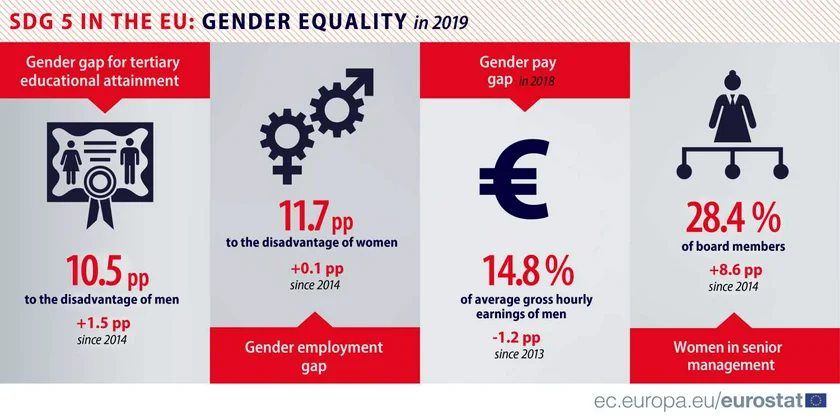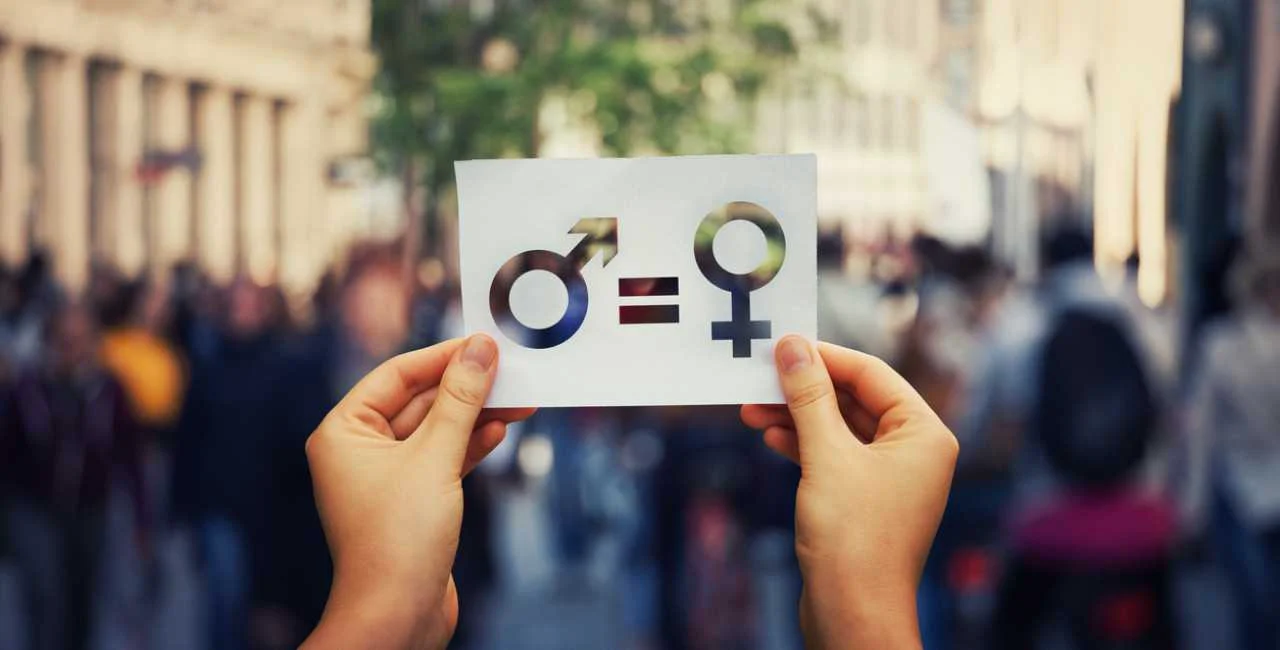The Czech Republic lags behind the EU average in many areas of gender equality, and in many cases was behind other Visegrád Four members as well as neighboring Germany and Austria, according to new figures released by Eurostat.
The Visegrád Four (V4) includes the Czech Republic, Slovakia, Poland and Hungary. Of these, only Hungary does not share a border with the Czech Republic.
Higher education
The only category tracked by Eurostat where women were ahead of men was in tertiary education. The EU-27 average for women, based on 2019 figures, was 45.6% for women and 35.1% for men. The gap of 10.5 percentage points in favor of women has increased 1.5 percentage points since 2014, according to figures from Eurostat. The figures are part of Eurostat’s focus on sustainable development goals (SDG).
The Czech Republic had lower than average levels in tertiary education for both genders, at 41.0% for women and 29.5% for men, and a bigger gender gap, at 11.5% in favor of women.
Of the six surveyed countries, Poland led in higher education for women, at 56.4%, while Austria led for men with 39.3%. Poland also had the biggest gender gap, with 19.2% in favor of women.
Germany had the smallest education gender gap, just 0.8%, but also had the lowest percentage of women, with 35.9%, and 35.1% for men. The lowest percentage of men was in Hungary, with 27.2%, the only country among the six to be lower than the Czech Republic for men.
Pay gap
The Czech Republic did poorly in terms of the gender pay gap, which is 20.1% in favor of men, compared to the EU average of 14.8%. The EU gap has dropped 1.2 percentage points since 2013. while it has dropped 2.2 percentage points over the same time in the Czech Republic.
Poland had the smallest gap, with 8.8%, while Germany had the largest, at 20.9%, the only of the six surveyed countries to do worse than the Czech Republic.

Employment of recent graduates
Men in the six surveyed countries all did better than the EU-27 average in employment of recent graduates, while only women in Slovakia were behind the EU curve. Some 78.6% of women and 83.2% of men across the EU aged 20 to 34 with at least upper-secondary education were employed in 2019. The gap was 4.6 percentage points in favor of men, up 0.8 percentage points since 2014.
For Czech women, post-graduate employment was 79.5% and for Czech men it was 95.3. Czech men led the six surveyed countries in this category, while women came in next-to-last. The gender gap was the biggest of the six surveyed countries, at 15.8%.
Germany led for post-graduate employment of women with 90.9%. Germany also had the smallest gender gap, at 3.5%, since 94.4% of post-graduate men were employed.
Slovakia did poorest for post-graduate women of the six countries, at 76.9% employment, the only country behind the Czech Republic.

Women in senior management
The Czech Republic also did poorly in the percentage of women in senior management, at 18.2%, compared to the EU average of 28.4%. Only Hungary was lower, at 12.9%, while Germany led the six surveyed countries, at 35.6%.
Germany and the Czech Republic were virtually tied in this category a decade ago — at 12.6% and 12.2% respectively in 2010. Germany has showed a steady rise, almost tripling its percentage, while the Czech development was been quite erratic over the same time, rising just 6 percentage points.
Employment gap
Overall, the employment gender gap, tracking the difference between the employment rate of men and women aged 20–64, has been falling in the Czech Republic, and catching up with the EU average, though there is still some distance to go. The gap in the Czech Republic now is 15.0% in favor of men, compared to 11.7% in the EU.
Since the start of the 21st century, the employment gender gap in the Czech Republic peaked at 19.5% in 2008, when the EU-27 average was 15.3%. The Czech rate has been falling ever since with the exception of a slight uptick in 2014, while the EU rate has stagnated since 2014 at plus or minus 0.1 percentage points of 11.7%.
The highest gap of the six surveyed countries is in Hungary, with 15.5%, while Germany had the smallest at 8%.
Caring for others
The biggest gender gaps are in the percentages of people aged 20 to 64 inactive in the workforce due to caring responsibilities, such as child care. These figures are the percentages of the economically inactive population who are inactive due to taking care of others, not a percentage of the overall population.
Across the EU, this category included 32.2% for women and 4.5% for men, a gap of 27.7 percentage points. The Czech Republic had the biggest gap, with 41% for women and 1.7% for men, a gap of 39.3%. It was also the highest percentage of women and lowest for men among the surveyed countries.
Poland had the most men, with 11.7%, and second-highest percentage of women at 40.6.%, for a gap of 28.9%. Austria had to smallest gender gap, at 24.8%, with 27.9% for women and 3.1% for men.
An interactive breakdown of gender statistics in these categories can be found at the Eurostat website.












 Reading time: 4 minutes
Reading time: 4 minutes 

























